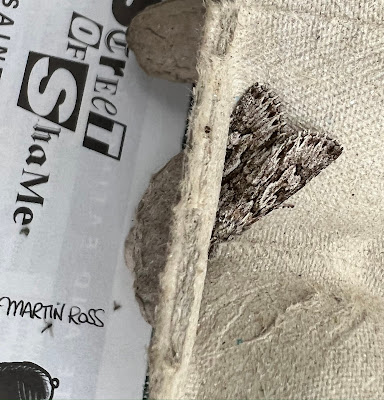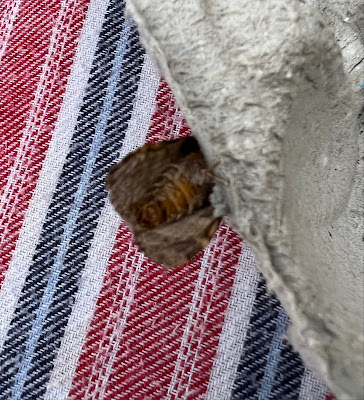Blenheim Palace's butterfly garden is a couple of miles' bike ride from here and a perfect place to go to bring back memories of butterfly-hunting in Zimbabwe and Sulawesi long ago. The butterflies are vividly beautiful beyond imagining and very accessible. Delighted children find them perching on their clothes; I led this lovely iridescent blue one a merry dance with my matching blue, and apparently intoxicating socks.
Here are some of the many species; I am sorry not to have squirrelled out their names but the long and delightfully warm greenhouse has an excellent identification chart. You can also watch them emerging from chrysalises in a cabinet at the far end. The experience has little of the thrill of encountering even just one such specimen in the wild, but everything else about it is five-star.
Visitors' closeness to the insects also allows an unhurried examination of their flying and feeding techniques such the way that a determined male will hover for ages over an unresponsive female as was the case with the red-and-black pair in my first composite picture. The opportunities for photography are endless and help an understanding of the butterflies' structure, such as the modest size of each of the scales which, in their thousands, make up the glorious wings.
Back at home, the moth trap is becoming more varied in its quieter way and here are some of its recent visitors: a shy Early Grey (the Tea Moth to me, as I am about to make some to wake P and we mix English Breakfast and Earl Grey half-and-half), then a more upfront one;
Next, a Swallow Prominent with the slender multiple chevrons which mark it out from its Lesser cousin which has one, large white triangle. And then a Herald, shield-shaped, metallic and bronzy as though forged by Hephaestus, altogether a lovely Spring arrival.
The Frosted Green makes a change as well even if its colouring is very often hard to discern. Home in, however, and it is there. Its kitten ears also give it a distinctive profile amid the eggboxes.
Finally, a glimpse of the underwing of a Common Quaker and the chubby body which makes such an attractive target for my resident robins and blackbirds. And another Common Quaker, worn but lovely in the modest way which gives it and the various other Quaker moths their name.












No comments:
Post a Comment